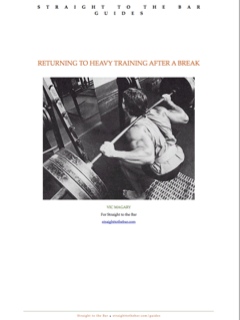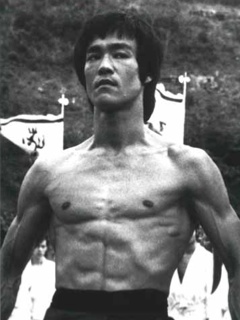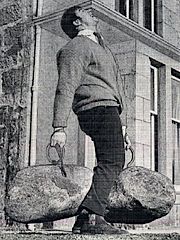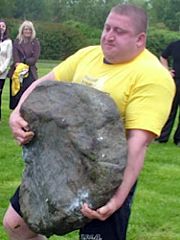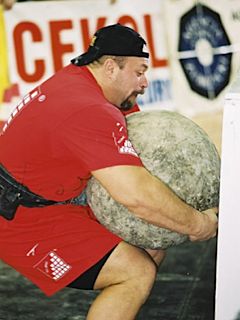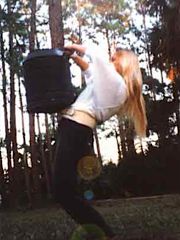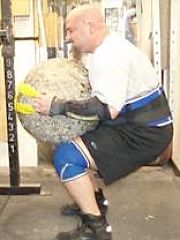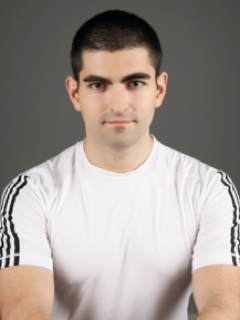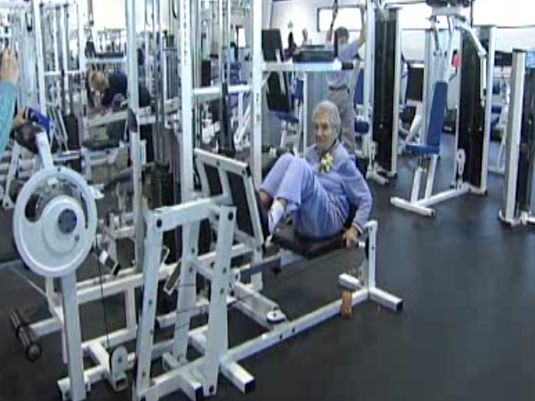
"It is generally believed that if more than 15 repetitions per set are possible, the weight is too light to stimulate maximal growth."
This is why the commonly prescribed regime for muscle mass is 8-12 reps at >70% of one repetition maximum, while for shape and definition the prevailing approach is that of 15-25 reps to failure using lighter weights.
But is there any research to support the notion that heavy weights are indeed required for muscle increase? Has anybody ever proven that lighter weights are similarly, if not more effective, in stimulating muscle growth? The truth is that current beliefs on the effectiveness of heavy weight training are based mainly on empirical evidence. From a physiological point of view, we know very little as to how heavier training loads would result in greater muscle hypertrophy than lighter weights lifted to the point of fatigue.
Research has come to challenge and stir debate on what we have so far considered a requirement for muscle hypertrophy. According to recent studies, it appears that heavy resistance (high intensity) is not a pre-requisite for muscle hypertrophy. In fact, volume, not intensity, could be where the secret to fast muscle growth lies.
High Load vs Low Load
In a 2010 study, researchers from the McMaster University (Canada), and the University of Nottingham (UK) attempted to determine how intensity and volume affect muscle growth. Specifically, they compared which of the two -intensity or volume - triggers the highest protein synthesis, anabolic signalling and gene expression in the muscle tissue.
In this study, the researchers asked 15 men to perform 4 sets of leg extensions either with high intensity or with high volume. All men were familiar with this type of exercise as they engaged in lower body resistance training for more than 6 months before the experiment.
The participants performed the 4 sets of leg extensions, resting for 3 minutes between each set, in two different ways as far as the intensity and volume are concerned. In the first way, the intensity was set at 90% of 1 repetition maximum (1RM) and the exercise was performed until failure (90FAIL). In the second way, the intensity was set at 30% of 1RM until failure (30FAIL). Failure was reached when an additional full repetition could not be completed due to fatigue.
As it was expected, in the 90FAIL condition the weight the participants could lift was heavy (80kg) but they could lift it for only a few times (5 reps on average) in each set. In the 30FAIL condition, though, where resistance was set 3 times lower (28kg), the times the weight was lifted increased 5 fold (24 reps). The exercise volume of each condition, which was determined by multiplying the repetitions accomplished by the load (kg) lifted, was higher in the 30FAIL condition (1073) than in the 90FAIL one (710).
Protein Synthesis Rate Depends More on Volume than Load
We know that weight lifting stimulates the production of skeletal muscle proteins. As a result, our muscles grow (hypertrophy). Therefore, by measuring the rate of protein synthesis we can indirectly assess how exercise may affect muscle size.
There are two types of muscular hypertrophy: Myofibrillar, which refers to the contractile component of the muscle cell and results in strength increase rather than size increase, and Sarcoplasmic which refers to the non-contractile component of the muscle cell and results in size increase rather than strength increase.
Researchers examined whether intensity (90FAIL) or volume (30FAIL) resulted in greater activation of protein synthesis in the muscle cells of the participants' quadriceps. Specifically, they looked at both myofibrillar and sarcoplamic protein synthesis. The protein synthesis was measured at rest (before the exercise), at 4 hours-, and 12 hours-post exercise.
As the graph shows, at 4 hours, myofibrillar protein synthesis was elevated in both conditions to almost the same degree. However, protein synthesis was sustained at 24 hours only in the 30FAIL protocol.
Similar results were obtained when sarcoplasmic protein synthesis, and several genes and proteins involved in anabolic signaling were studied.
What does this mean? Simply, low-load high volume weight lifting (30FAIL) is more effective at activating muscle protein synthesis than high-load low volume weight lifting (90FAIL).
Does this mean that low intensity high volume resistance training makes a muscle bigger and stronger, too? Perhaps, it does. In order to find out if this unexpected effect of low-load high volume on protein synthesis leads to increased muscle size and performance, researchers did another experiment.





